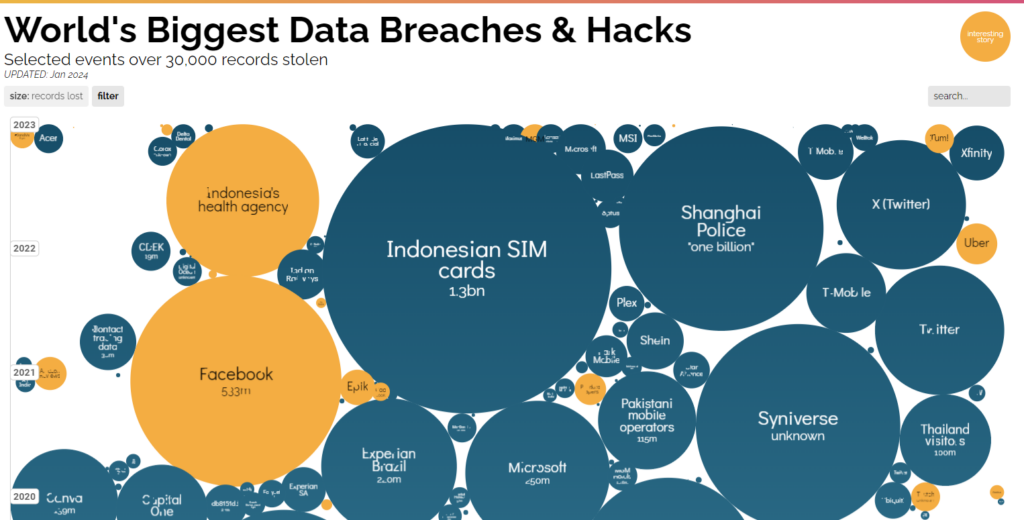In a recent Financial Times article (link below), the author talks about how most businesses aren’t ready for AI … it’s true, and potentially, really dangerous! While businesses could very well plug in an AI, the information and insights it may generate will only be as good as the data it has access to.
ALL established businesses use multiple software apps & platforms to run their business – financial, marketing, sales, people/HR, a CRM etc. These tools will have been introduced when they were needed and been integrated into the business infrastructure without any kind of strategic planning or decision making … ‘cos let’s face it no one does that. When you’re growing as a business you just need to get stuff done and move to the next challenge.
The problem is that most businesses end up with a whole bunch of data sources that often have the same sort of information (think customer data) but these data sources are disconnected and don’t talk to each other which often results in inaccurate and/or conflicting data – the kind of environment where an AI won’t be effective! (Our colleague Szymon Szysko touches on the value of ‘Golden Records’ or ‘Master Data’ in his article: The Value of the Golden Record).
The vast majority of businesses are novices when it comes to establishing a robust data infrastructure that will develop and mature as the business grows. This is starting to change with more leaders recognising the significance of establishing an effective data environment. But we’re not there yet so I’m here to talk about the whole concept of Data Maturity and the things you should consider if you want to be considered a ‘Data Leader’.
Let’s start with a definition …
Data Maturity can be thought of as the degree to which an organisation makes use of and leverages data in its decision making. The more an organisation is able to utilise its data, the more mature it is perceived to be.
So what …
Why the hell is data maturity important anyway?
Being a data mature organisation has massive benefits. Firstly, data mature organisations significantly reduce their data-related risks. By having robust architecture, high data quality, strong governance, good analytics and a data culture, you’re less likely to experience data breaches, losses or compliance issues. You do not want to be in this, admittedly beautiful and addictive, infographic of global data breaches.

Secondly, the positive way of looking at this is that data mature organisations are equipped to maximise competitive advantage through data and most interestingly, the opportunities arising from AI. Or, as written in the press last week, “most companies are not ready to deploy generative artificial intelligence at scale because they lack strong data infrastructure or the controls needed to make sure the technology is used safely”. Read more in the Financial Times (subscription required).
In his article “Data Maturity Framework: Key Benefits and Best Practices”, Vijay Amapathy” references a Heap-sponsored IDC white paper where data mature organisations enjoy benefits such as:
1. Getting answers within minutes or hours (rather than days or weeks). 84% of the most mature teams receive answers in minutes or hours compared to only 3% of lagging teams.
2. Being able to collect data from a single source of truth. 76% of leading organisations have a single source of truth, in comparison to only 3% of lagging organisations.
3. Reviewing KPI’s often. By reviewing and updating KPIs regularly, data-mature companies achieved 85% user retention and a conversion rate of 74.2%. Additionally, leading companies reported that they improved their operational cost KPI by 37%.
4. Experimenting frequently. 89% of data mature companies pride themselves in having a culture of experimentation.
5. Understanding friction points in the customer journey. 98% of the leading data-mature companies have a good to excellent understanding of customer journey friction points. In comparison, only 29% of lagging companies reported having this.
But if you want a 1-liner, the most compelling reasons are rooted in the fact that according to the IDC white paper, “companies that have adopted mature data practices achieve 2.5x better business outcomes across the board. Significant increases were seen for revenues and profits, efficiency, higher NPS scores and lifetime customer value.”
Data Mature organisations perform better. Period
Where are you on the scale?
You can find out in 10 minutes using our hot-off-the-press DATA³ Data Maturity Score calculator at https://datamaturityscore.com/ which rates Data Maturity across 6 dimensions:
1. Risk – is your data compliant and secure? Is risk mitigated through established business wide data processes?
2. Architecture – is your data scalable, flexible and in a secure framework to ensure high-quality, high-performance and automation? Does your organisation enable ease of data access and is it fit for the future?
3. Quality – does your data have substance? Is it accurate and trusted? and is it connected throughout your organisation ready for use?
4. Governance – do you have the right policies and structure surrounding your data and is the right data available at the right time, in the right format to enable accurate data informed decision making?
5. Analytics – how insightful is your data? Is your team equipped and your data effective in generating relevant insight to inform your business today and into the future?
6. Culture – do you and your team instinctively leverage your data asset in all aspects of your organisation? Is your data transparent, accessible and relevant?

Once you have your ratings, this can be matched against the data transformation curve…

Now you know your score, what does good look like?
By completing the DATA³ Maturity Score, you are already on the data transformation journey. The first step is recognising that good data practices can power your organisation forward, and poor data practices can hold you back.
If your overall score is (0-31)
This means you are at the beginning of your journey with an inconsistent utilisation of data. This means you are likely to have areas of risk through uncontrolled data.
If your overall score is (32-64)
This means you are making positive steps in utilising your data. You have areas of strength and areas of relative weakness, but you are unlikely to keeping up with your competition.
If your overall score is (65+)
This means you are starting to look at your data as a competitive advantage. You are relatively mature across most aspects of your data utilisation. The next step of your data transformation journey is to lead the pack through innovative ways of adoption, application and utilisation to ensure you stay current, maintaining the advantage you have worked hard to achieve.
What next?
Well that’s up to you … but make no mistake, there’s no quick fix to becoming a data mature organisation. The simplest thing to do is seek to understand what your particular data transformation project might look like.
This is where we can help. Please feel free to get in touch …
Operations Director


Here’s me and our MD Sam Holwell at The Great British Entrepreneur Awards!